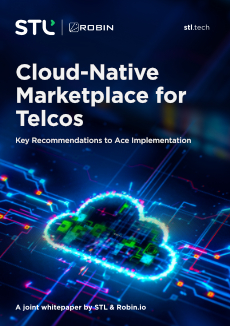Introduction
In the first part of this whitepaper series, we discussed how an enterprise marketplace could prove to be a panacea for telcos’ digital transformation woes. We also discussed, at length, numerous use cases that can be explored using the enterprise marketplace, such as
IoT-as-a-Service, SD-WAN-as-a-Service and virtualized RAN-as-a-Service.
Going beyond offering basic connectivity, the cloud-STX-native marketplace equips telcos to become digital platform players who can partner with multiple solution providers from various industry verticals to provide a combined value to the enterprise customers. The enterprise segment will open a world of new opportunities for the telcos and promises to create a much larger impact on the way partners and customers interact in the ecosystem.
Here, in the second part of the series, STL, along with Robin.io, will analyse and help you understand the best practices for a successful marketplace implementation. Three key learnings from this whitepaper are
- How to build a marketplace that can help telcos to address three focus areas: Speed, Scale and TCO reduction
- How cloud-native infrastructure can spanfrom IT to the infrastructure layer making your infrastructure as agile as your IT layer
- How to transform your platform and digitize various processes to support XaaS offerings
The key challenges in the adoption of enterprise marketplace
While an enterprise marketplace accelerates digital transformation, it’s not an easy journey. Hence, before undertaking this transformation, it is crucial that telcos be mindful of these challenges and resolve them way ahead of time. As with any technology transformation minor issues can lead to considerable risks in the long run, if not careful.
Complexities of Enterprise Segment limits the pace of digitization
Different enterprise segments have different needs, so choose your segment wisely. The ability to offer Everything-as-a-Service requires a high level of adaptability to different use cases. For example, enabling enterprise Software-as-a-Service is much easier compared to enabling Network-as-a-Service, which requires complex integration with partners such as hardware providers, software providers and network applications providers, transport connectivity might be provided by one service provider, while 5G vRAN connectivity would be provided by another provider. Such complex bundled offerings require digitization of all business processes.



